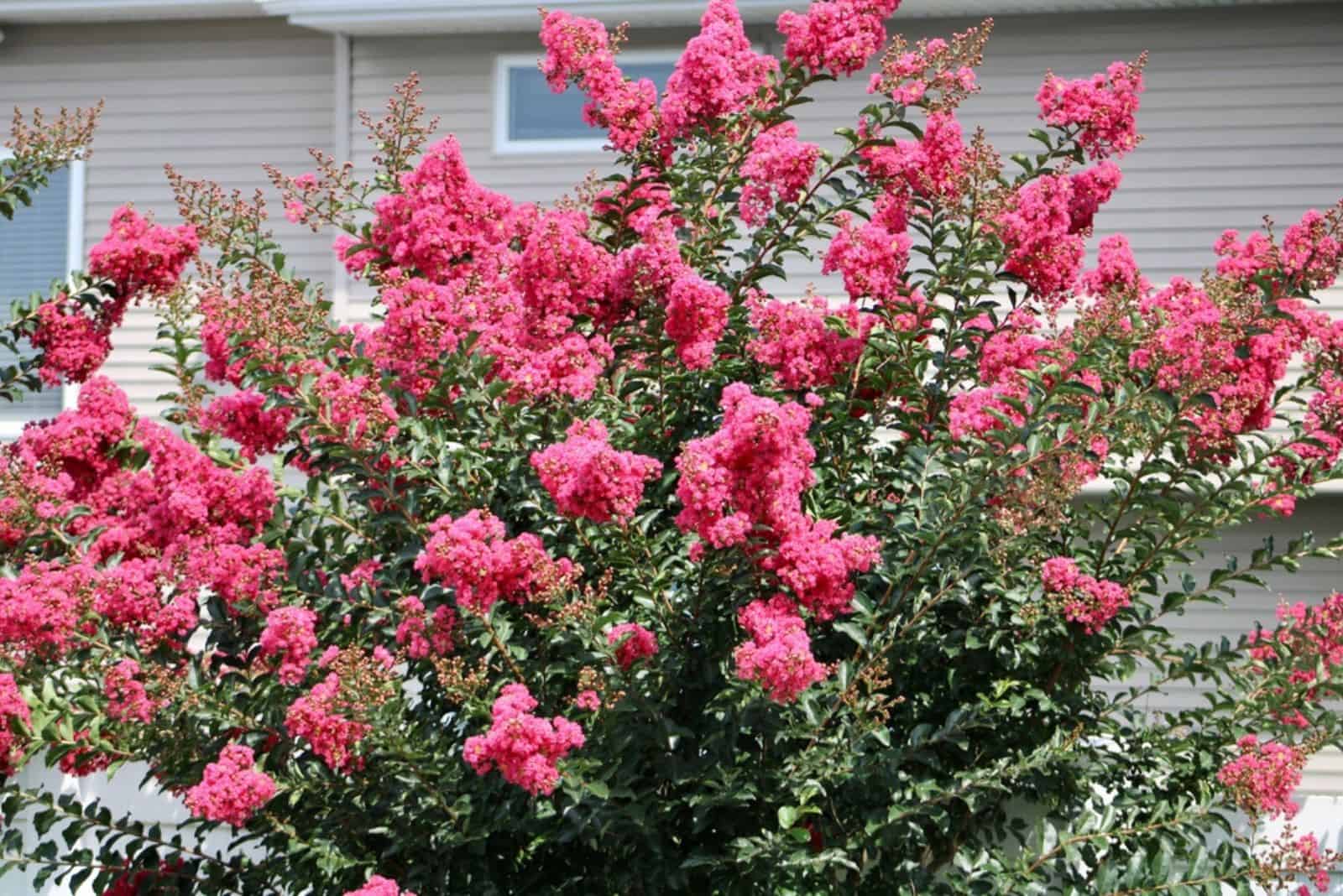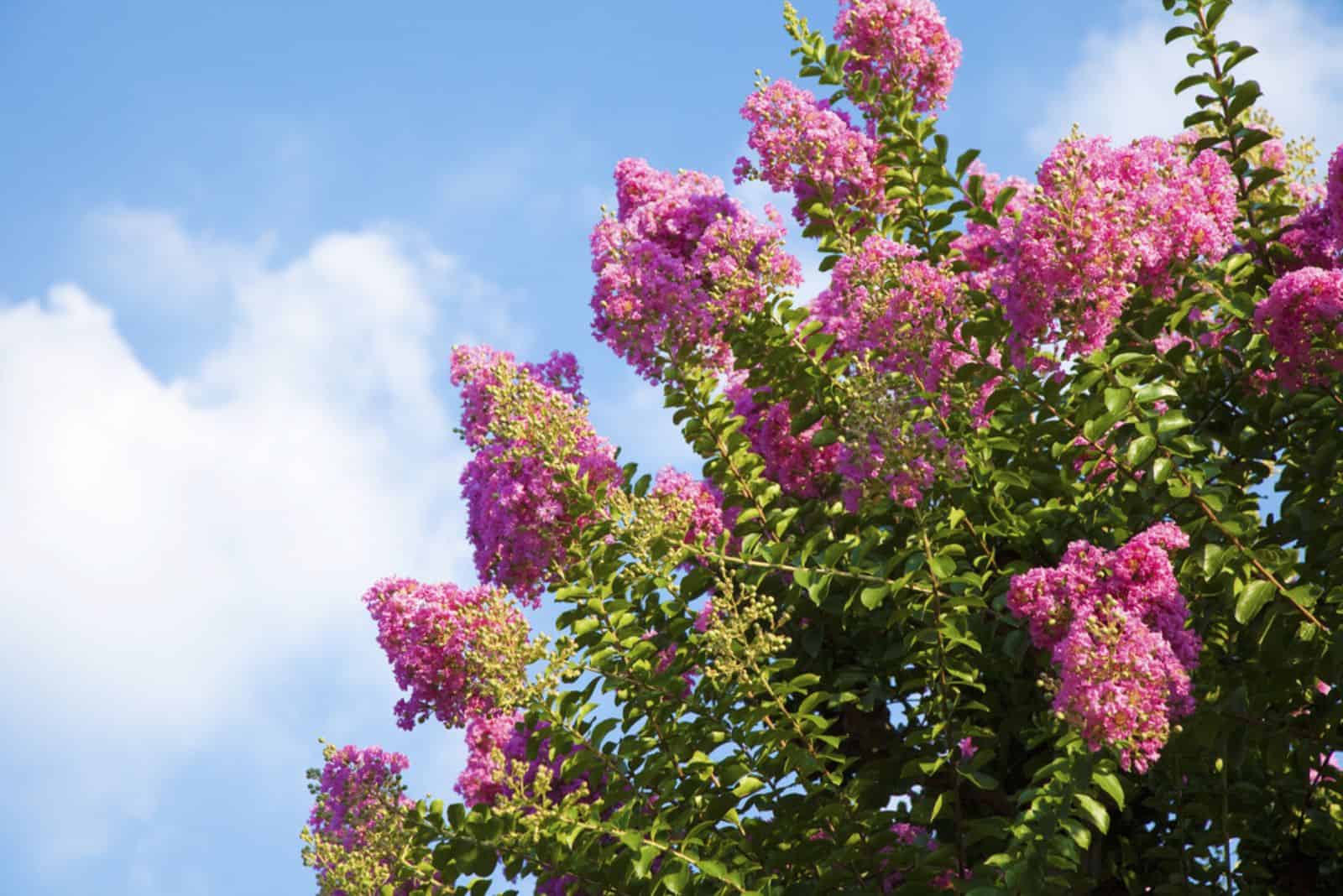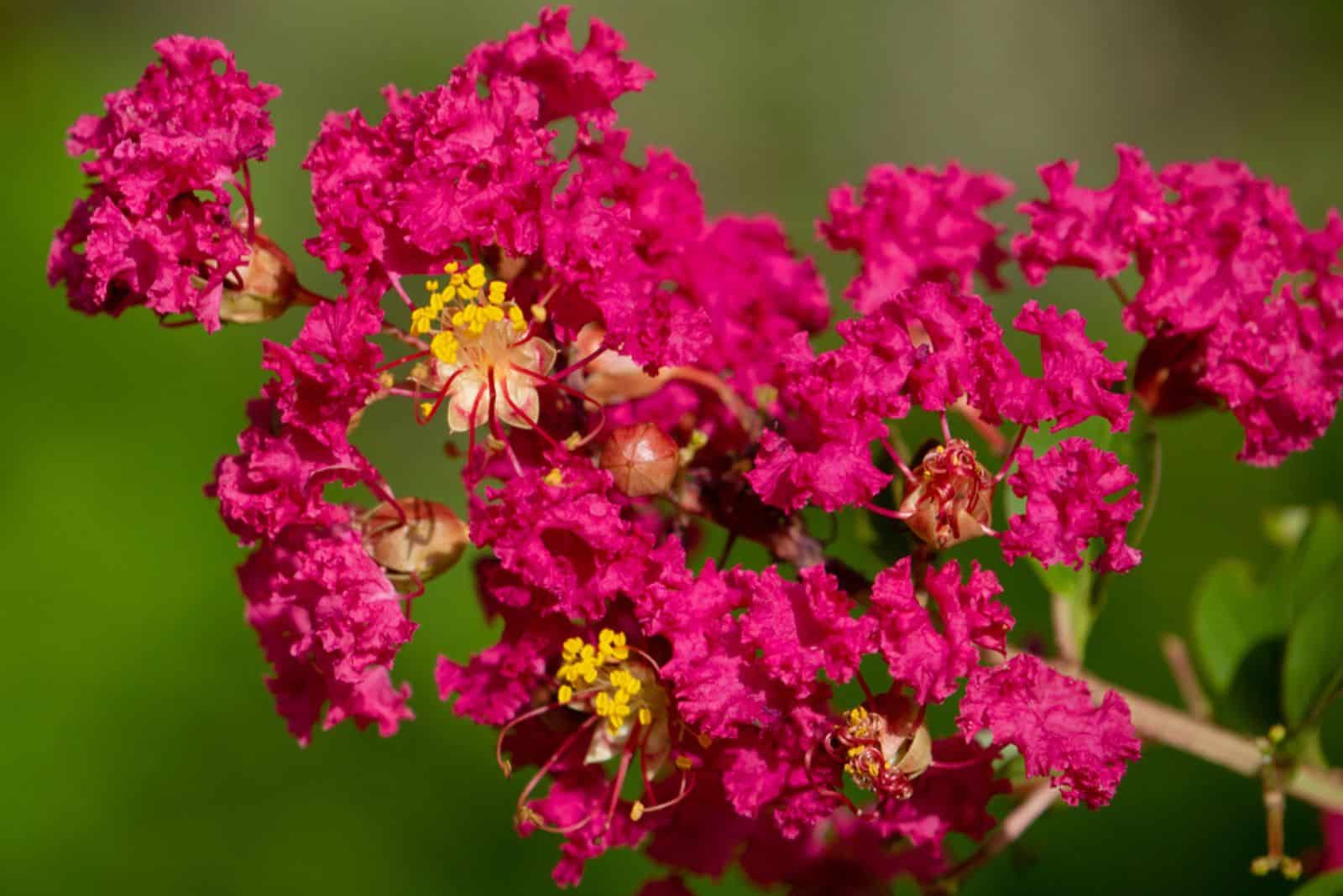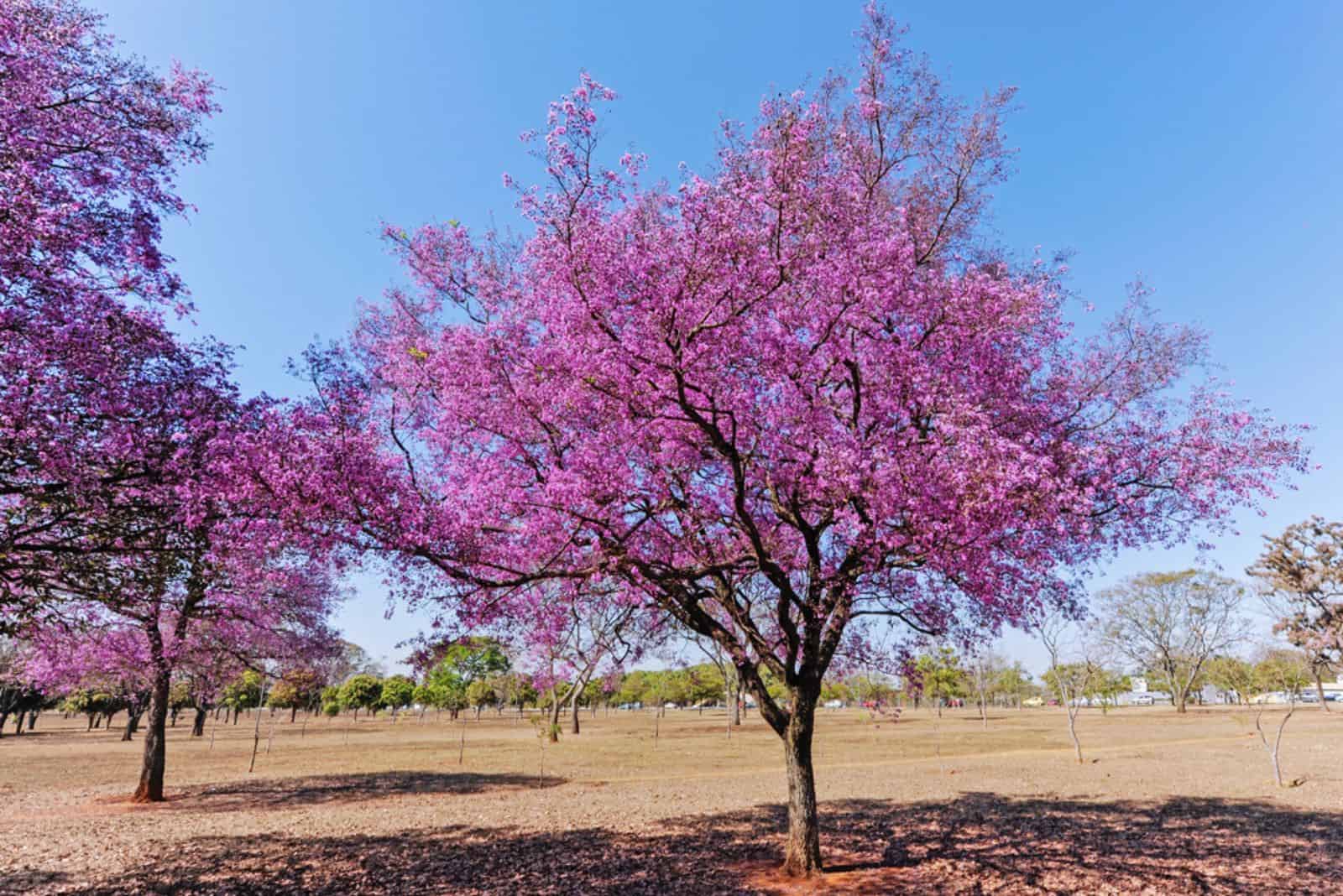It would be great if we planted our trees and never had to move them. Sometimes we transplant because of aesthetics, but sometimes we don’t have a choice.
If you are transplanting for aesthetic reasons, you need to know the best time to transplant crepe myrtle.
I’ll also explain when transplantation is obligatory and how to do it when you cannot wait for that right moment.
Let’s get started!
Which Season Is Perfect For Transplanting Crepe Myrtle
The time of the year plays a major role in the transplantation process of crepe myrtle and all plants in general.
If you want to transplant your crepe myrtle, it’s best to do it during colder months, i.e., late fall through winter.
These trees grow actively and produce magnificent blossoms during spring and summer. During this period, the crepe myrtle needs a lot of energy and spends all the nutrients and water available.
After the active growth finishes, the crepe myrtle needs a rest. The Lagerstroemia indica enters dormancy as soon as the fall approaches.
Nutrient and water uptake during this period is low, so your crepe myrtle is less susceptible to transplant shock. (1)
There’s one thing you shouldn’t forget: every plant will go through transplant shock to some extent, and our job is to minimize the effects it could have. Apart from transplanting during dormancy, there are some other ways to help our trees through this process.
For instance, by transplanting your crepe myrtle to a spot where it can get a lot of full sun, you ensure more energy for future growth.
Additionally, giving it enough water before and after transplantation will help your tree recover faster.
Signs Your Crepe Myrtle Tree Needs Transplanting
In some cases, transplanting crepe myrtle can’t be avoided. For instance, the tree roots may lack space to develop further, sun exposure is limited, or nearby infrastructure is endangered.
Let’s get into the details!
Root System Is Restricted
We know how much space trees need before planting, depending on the species. But bear in mind that many cultivars of species can grow taller than their parent plant.
Crepe myrtle cultivars can be from 4 to 30 feet tall, which means you need to pay a lot of attention before planting one.
If your tree exceeds 10 feet, you have a taller variety that needs a lot of space to develop further. I highly recommend transplanting it before it’s fully established.
Here’s a table with some short and tall crepe myrtle cultivars.
[table id=707 /]
Your Crepe Myrtle Needs More Light
This species is very hardy and makes a perfect zone 7 tree. In order to produce an abundance of blossoms, the crepe myrtle needs a lot of direct light.
If something is restricting your young crepe myrtle’s light exposure, such as a taller tree or fence, consider replanting it.
A lack of light for crepe myrtles can result in fewer to no blossoms, stunted growth, and yellow leaves.
Infrastructure Is Endangered
Massive mature trees pose a threat to surrounding infrastructure. (2) If you have a smaller crepe myrtle cultivar, you don’t need to worry about it destroying anything.
However, large specimens may affect power lines or utility lines underground. If you notice your crepe myrtle is getting larger than you expected, move it to a more secure location.
Crepe myrtle is considered invasive in the US (3), so consult with local authorities before you plant the tree or during maintenance.
How To Transplant Crepe Myrtle
Transplanting crepe myrtle trees may be challenging, especially if you have taller and fully established cultivars.
First, decide on the date you plan to transplant the tree. Start irrigating your crepe myrtle a few days in advance and repeat each day.
Choose a new location for your crepe myrtle where it can receive enough direct light. Dig a hole deep and wide enough for tree roots to fit in.
When uprooting the tree, be careful not to damage the root system. Slowly dig around the tree until you expose the roots. Transplant the tree and pack the soil around the base well; I recommend using some of the old soil to avoid shock.
Water your crepe myrtle well and resume with usual care.
Here’s a video showing how to transplant the shoots:
Wrapping Up
When it comes to appearance, the crepe myrtle tree is undoubtedly one of the prettiest.
Since transplantation is sometimes necessary, now you know the signs and the best time to transplant crepe myrtle.
Good luck and until next time!
References
1. Struve, D.K.. (2009). Tree Establishment: A Review of Some of the Factors Affecting Transplant Survival and Establishment. Arboriculture and Urban Forestry.
2. Dr. Kim D. Coder. (1998). Tree Root Growth Control Series: Tree Roots And Infrastructure Damage. University of Georgia.
3. Trees: Invasive Plant Atlas of the United States. (n.d.). https://www.invasiveplantatlas.org/trees.cfm




